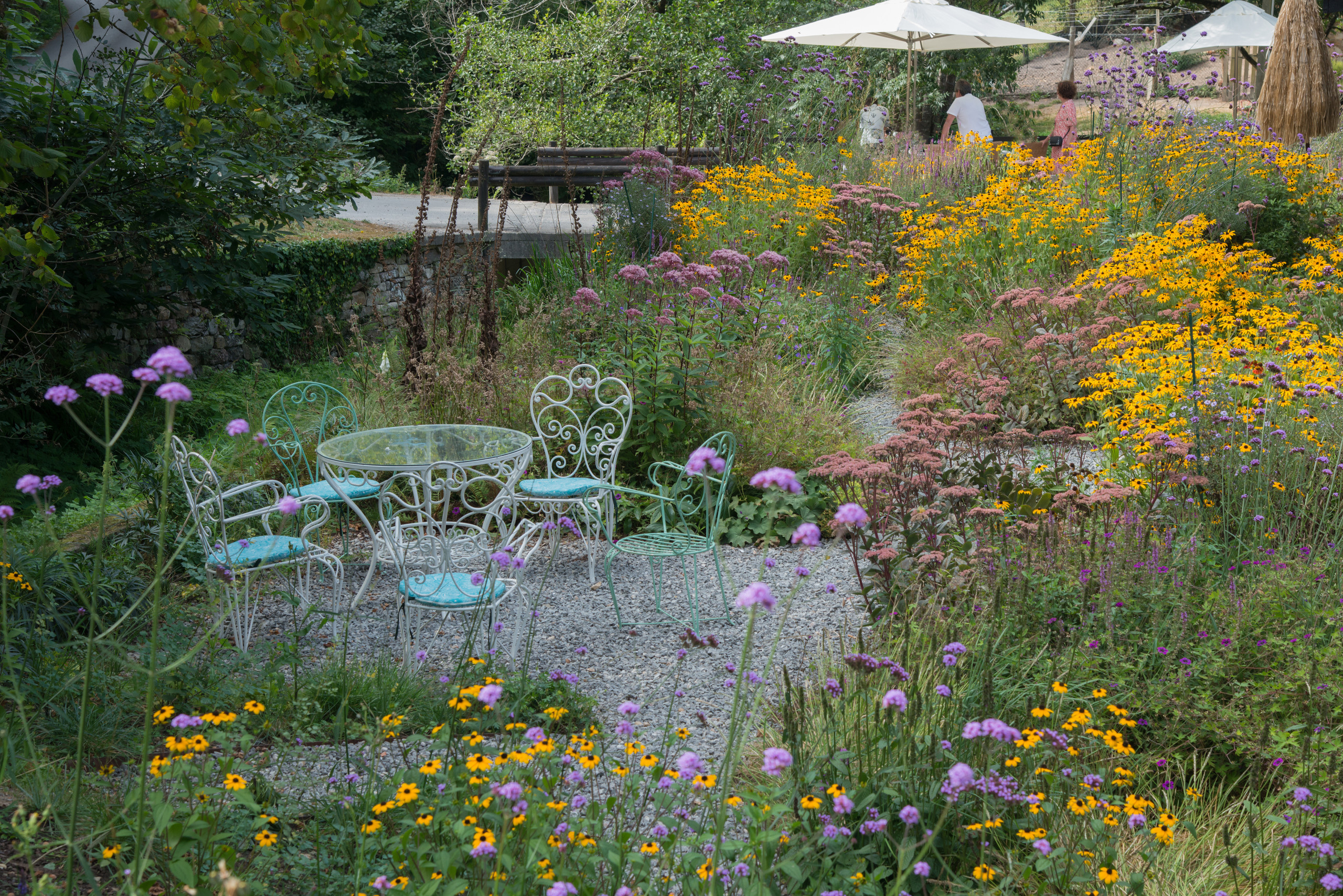Landscaping That Respects Nature and Celebrates Native Beauty in Maryland
ShopCoexisting with Deer in large spaces.

A great step-by-step guide to coexistence with deer! .. (In large gardens)
According to the Humane Gardener, if you are battling deer these plants should be on your must have list:
Wild senna, blue mistflower, boneset, common milkweed, mountain mint, wrinkleleaf goldenrod, aromatic asters, or scarlet bee balm, Virginia bluebells, golden ragwort, wild ginger, wild bergamot, sneezeweed, false nettle, false sunflowers, penstemons, giant yellow hyssop, purple hyssop, blue vervain, elephant’s foot, ironweed, blue waxseed, yuccas, ostrich ferns, hayscented ferns, royal ferns, cinnamon ferns or any other ferns, beautyberries, coralberries, bayberries, hollies, Eastern red cedars, coral honeysuckle and wingstems.
1. Deer like tender plants, give nature time to catch up.
2. Welcome plant resilience, even the tastiest plants bounce back from browsing.
3. Create communities: nurture “associational resistance.”It’s about creating a neighborhood, a variety, so that any one herbivore won’t necessarily look at all of the plants as really highly valuable or palatable,”……“It’s not like a rabbit going in a carrot field and saying, ‘I’m just going to mow everything down.’ You have to actually spend a lot of time finding that food item that is the most palatable to you.
4. Enlist plant protectors: grasses, ferns, sedges, mints, milkweeds and more.
When bluestems and other native grasses are intermingled, tastier plants like phlox and asters are less appealing
5. Bring on the thorny and sticky plants.
6. Rethink “weeds,” encouraging native volunteers in your garden.
Pokeweed, for example, offers lots of good snacks to deer as they meander along our pathways; Burnweed, on the other hand, is less appealing to deer but can serve as a protector plant.
7. Create spatial buffets and buffers along the paths that deer and rabbits most frequent.
8. Nurture habitat-enriching dead-wood barriers.
Where possible, leave dead wood standing, including spent flower stalks and grasses, to enrich habitat for bees and birds while also creating natural deterrents around tender plants.
9.Use caging temporarily and creatively.
10. Be present and thoughtful.
If the plants can work together to create resilient forests and grasslands—the only homes they’ll ever know—then surely we can learn to share resources with the other inhabitants of our spaces too, replacing resistance to our wild neighbors with a more peaceful coexistence.
Source: https://www.humanegardener.com/deer-eat-this-garden-and-it-flourishes/?fbclid=IwY2xjawFjkkFleHRuA2FlbQIxMQABHTqvhMCGClRxFD22iPnnHeOEHS_XRnKZ_TN3zgruYIHZXnZWyD6tIF023w_aem_OfGQ7DNYXF84gSmgQjUtBw
